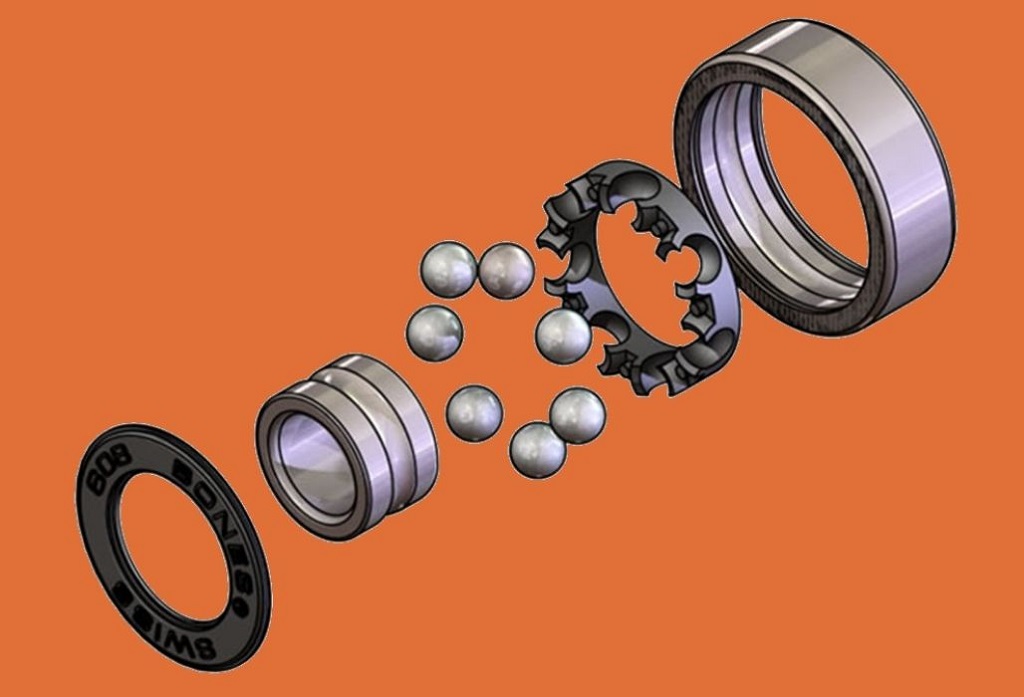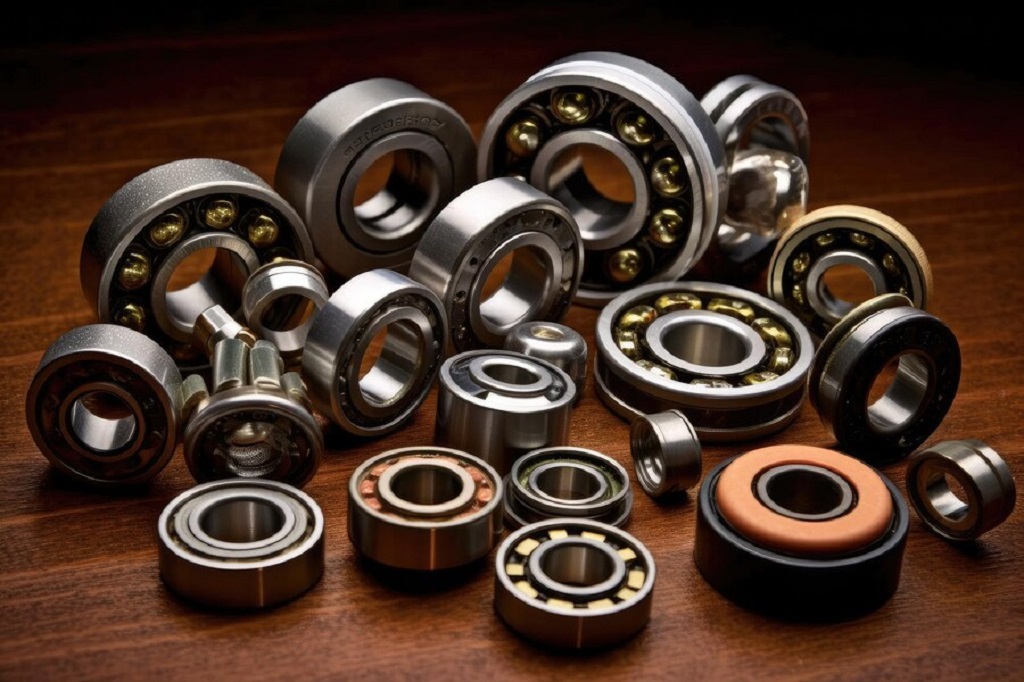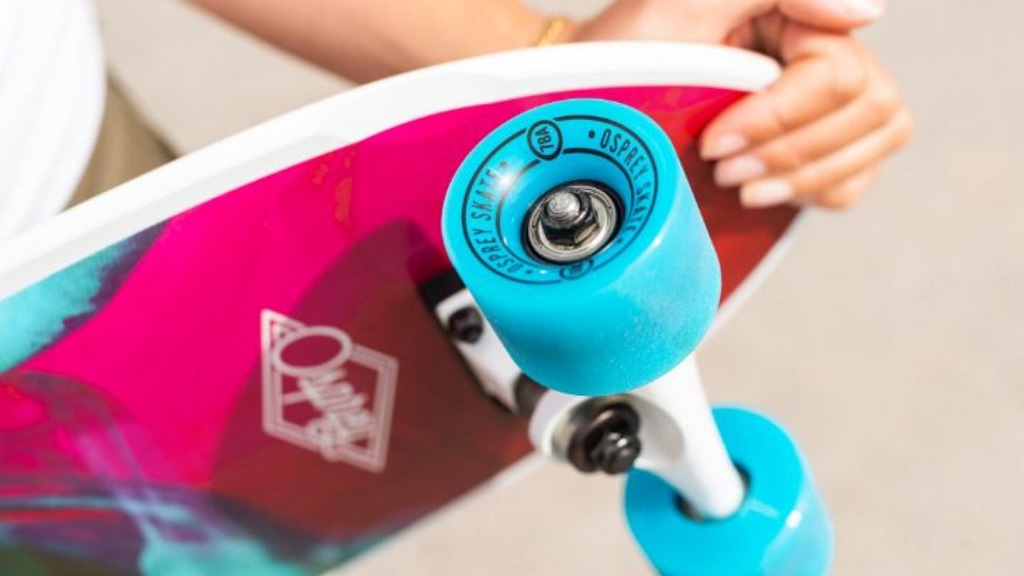Hey there, fellow skateboard enthusiast! So, you’re thinking of upgrading your skateboard bearings, huh? Well, you’ve come to the right place. Whether you’re a seasoned skater looking for an upgrade or a newbie who wants to pimp your ride, choosing the right skateboard bearings can make a world of difference in your skateboarding experience. In this comprehensive guide, we’re going to dive deep into the world of skateboard bearings, and by the end of it, you’ll be equipped with all the knowledge you need to make an informed decision.
What Are Skateboard Bearings?
First things first, let’s start with the basics. Skateboard bearings are small, donut-shaped components that fit inside the wheels of your skateboard. They play a crucial role in allowing your wheels to spin smoothly, giving you that satisfyingly fast and effortless ride. Without good bearings, you’d be stuck pushing and struggling to gain any speed. Discover how much does a skateboard weigh.
Why Should You Care About Bearings?
Picture this: you’re cruising down your favorite hill on your skateboard. The wind is in your hair, and the world blurs around you. But suddenly, you notice something’s off – your wheels are slowing down, and you’re losing that awesome speed. Your bearings might be the culprit. Great bearings ensure a smooth ride, less effort to push, and ultimately, a more enjoyable skateboarding experience.
How Do You Know What Bearings to Get?
Here’s where the fun begins. Choosing the right skateboard bearings can be a bit like selecting the perfect pair of shoes. It’s a personal preference, and there’s no one-size-fits-all answer. However, I’ll break down the key factors you should consider, making your decision a whole lot easier.
1. ABEC Ratings: What Do They Mean?
ABEC, which stands for Annular Bearing Engineering Committee, is a rating system used to measure the precision and tolerances of bearings. You’ll often see ABEC ratings ranging from 1 to 9 on skateboard bearings. The higher the ABEC rating, the more precise the bearing is.
But here’s the catch – when it comes to skateboarding, ABEC ratings aren’t the be-all and end-all. In fact, many experienced skateboarders will tell you that ABEC ratings are not the best indicator of a bearing’s quality for skateboarding. The reason? Skateboarding is tough on bearings, and factors like the environment and the forces exerted during skating can impact performance more than ABEC ratings.
In simpler terms, you can think of ABEC ratings like the horsepower of a car. It’s important, but it’s not the only thing that matters. So, don’t get too hung up on it.
2. Material Matters: Steel or Ceramic?
Skateboard bearings typically come in two main materials: steel and ceramic. Steel bearings are the more common and affordable option. They’re durable, easy to find, and perform well for most skaters.
On the other hand, ceramic bearings, often made from materials like silicon nitride, are a bit of a luxury in the skateboard world. They’re known for their smoother and quieter ride, as well as their resistance to corrosion. However, they can be significantly more expensive than steel bearings.
Think of it like this: steel bearings are like a trusty, reliable sedan, while ceramic bearings are like a high-end sports car. Both can get you where you want to go, but one might give you a smoother, more luxurious ride.
3. Sealed or Shielded: Protection Matters
When you’re out skating, your bearings face all sorts of challenges – dirt, dust, water, and other debris. That’s why it’s crucial to consider whether you want sealed or shielded bearings.
Sealed bearings have rubber seals that provide excellent protection against the elements. They keep out dirt and moisture, ensuring your bearings last longer. However, they can create slightly more friction, which might affect speed.
Shielded bearings, on the other hand, have metal shields that offer less protection but lower friction. They’re easier to clean and maintain but might require more attention if you skate in wet conditions.
Imagine your bearings as knights on a quest. Sealed bearings are the knights clad in heavy armor, impervious to dirt and water but slightly slower. Shielded bearings are the nimble, agile knights, quicker but needing more maintenance.
4. Pre-Lubricated or DIY Lubrication?
Some skateboard bearings come pre-lubricated with grease or oil. While this makes them ready to roll right out of the box, it also means you might have limited control over the type and amount of lubrication used. If you’re a control freak when it comes to your skateboard setup, you might prefer bearings that you can lubricate yourself.
Imagine your skateboard bearings are like pancakes. Pre-lubricated bearings are like pancakes from a diner – convenient, but you can’t change the recipe. DIY lubrication is like making your own pancakes – you have control over the ingredients and can customize them to your liking.
5. Brand Reputation: Trusted Names vs. Lesser-Known Brands
When you’re shopping for skateboard bearings, you’ll come across well-established brands like Bones, Bronson, and Independent. These brands have earned their reputation through years of delivering quality products to skaters worldwide. Opting for a trusted brand can be a safe bet if you’re unsure about which bearings to choose.
However, don’t discount lesser-known brands entirely. Sometimes, smaller companies produce excellent bearings that might suit your preferences perfectly. Just be sure to do your research and read reviews to get an idea of the quality and durability of the bearings.
Think of skateboard bearings like choosing a restaurant for dinner. You can go to a well-known, established place, or you can take a chance on that new, trendy spot. Both can be fantastic options; it just depends on your appetite for adventure.
In conclusion
Finding the right skateboard bearings is a bit like finding your perfect wave if you’re a surfer or your favorite trail if you’re a hiker. It’s a personal journey, and you’ll likely try a few options before discovering the bearings that suit your riding style and preferences best.
So, go ahead, explore different bearings, experiment, and don’t be afraid to ask your fellow skaters for advice. After all, the perfect set of bearings can take your skateboarding game to a whole new level of awesomeness. Happy riding!
FAQs (Frequently Asked Questions)
- What’s the difference between ABEC 5 and ABEC 7 bearings?
- ABEC ratings indicate the precision and tolerances of bearings, but for skateboarding, they aren’t the sole indicator of quality. ABEC 7 bearings are more precise than ABEC 5 bearings, but this doesn’t necessarily mean they’re better for skateboarding. Other factors like material, sealing, and maintenance matter just as much, if not more.
- Are ceramic bearings worth the higher price?
- Ceramic bearings offer a smoother and quieter ride, along with resistance to corrosion. However, they come at a premium price. Whether they’re worth it depends on your budget and how much you value the extra performance. Many skaters are perfectly happy with high-quality steel bearings.
- How often should I clean and lubricate my skateboard bearings?
- The frequency of cleaning and lubricating your bearings depends on your skating conditions. If you often skate in dirty or wet environments, you may need to clean and lubricate them more frequently, perhaps every few weeks. In cleaner conditions, you can extend the maintenance interval to a few months.
- Can I mix and match different brands of bearings on my skateboard?
- While it’s technically possible to mix and match bearings from different brands, it’s not recommended. Different brands may have variations in size, shape, and compatibility, which can affect the performance of your skateboard. It’s best to stick with a set of bearings from the same brand for optimal performance.
- What’s the easiest way to tell if my bearings need replacement?
- If your skateboard wheels don’t spin smoothly, make a grinding or squeaking noise, or if you have to exert more effort to push, it’s a sign that your bearings may need replacement or maintenance. Cleaning and lubricating your bearings can often resolve these issues, but if they persist, it might be time for new bearings.


